Halibut Cove Scenes, Part 3 (June 2021)
Bald eagles tend to get a lot of attention, even when they are "doing nothing," as when they are perched, watching, or when they are drifting high overhead. They are, after all, big and powerful and the adults have striking graphic presence. They don't always provoke admiration (my earliest art teacher considered them mere scavengers and suggested - at a time it was still legal to do so - that they be shot), but it's hard to ignore them. The next few posts illustrate a particular day in Halibut Cove when some beached fish carcasses attracted an eagle, and then another eagle, and then more eagles, until, for a time, 21 bald eagles were on the ground or in the air overhead or watching alertly nearby.
Before we get to the specifics of that day, it is worth thinking a little about bald eagles.
It's hard to tell whether being the National Bird has much to do with the attention they get. Probably not. If the wild turkey had been appointed the National Bird (as Benjamin Franklin proposed), it is unlikely the attention paid bald eagles would be much diminished. Is a wild turkey fundamentally impressive as it struts and pecks, a sort of Warren G. Harding or W.C. Fields with plumage? Maybe. But if a wild turkey and a bald eagle were to appear simultaneously, which would be more closely watched? In coastal Alaska, where bald eagles are common and wild turkeys are not, perhaps the turkey would be such a curiosity the eagle would be ignored. But in places where they both reside, the eagle seems to be the far more commanding presence. They have a dignity turkeys lack. Their steely gaze and hazel eyes that glare out beneath hooded brows seem to miss nothing. And they don't have wattles, snoods, or caruncles. An observer bent on anthropomorphism would characterize their beaks and talons as cruel and would note the way their toes and talons curl into fists when they take off or land, as though ready for confrontation. They are not Love Birds, nor even lovable, like chickadees or robins. They rarely amuse, leaving that role to puffins and penguins. And maybe turkeys.
We might wonder whether, if the turkey were the National Bird, national behavior and history might have been different. Would we have invaded Iraq again? Would McDonell Douglas really have named its F-15 fighter the Turkey, not the Eagle? Would there have been an Airborne division known as the Screaming Turkeys? Would we celebrate Thanksgiving the same way? Could an Eddy the Turkey have soared off Olympic ski jumps into public hearts?
In any event, now we need to consider the images collected on the day when some fish carcasses attracted a lot of eagles.
Starting with the basics: Bald eagles project presence and dignity. They assume the appearance of aloof nobility, whether perched and staring or soaring on improbably broad wings, spanning seven or more feet, with a chord width of about 24 inches, roughly half the total length of their bodies, from beak to tail feathers.
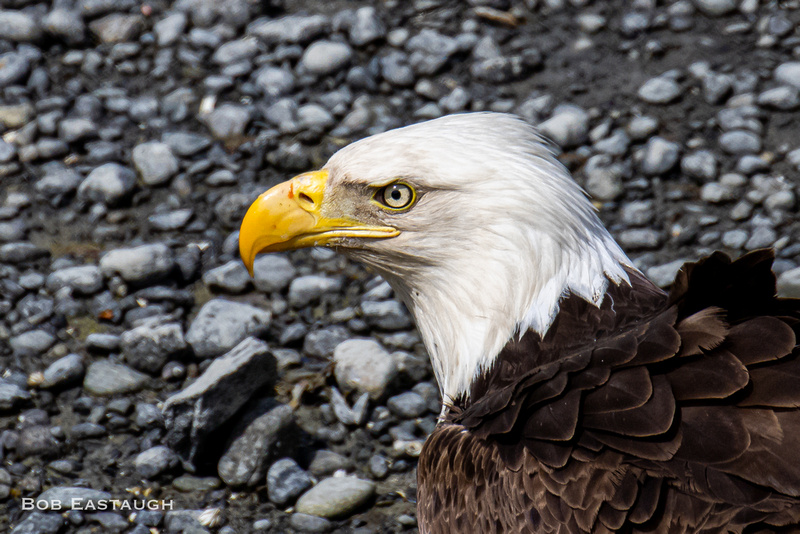 131A5350
131A5350
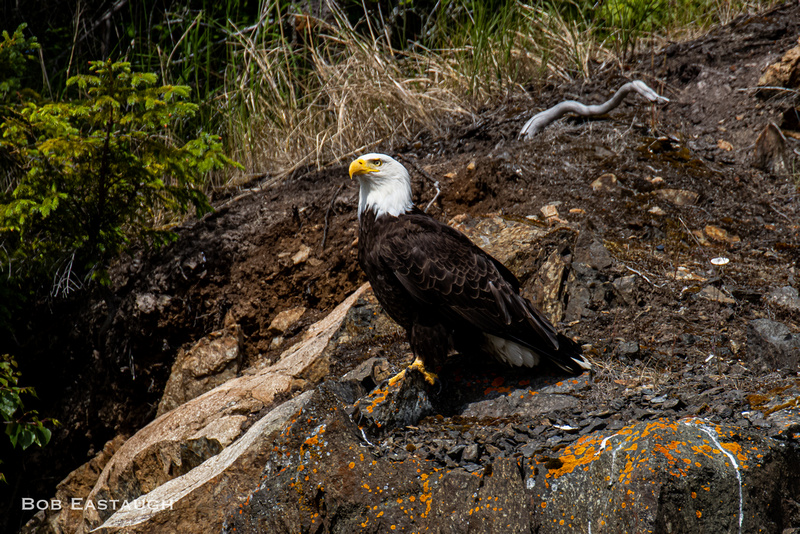 131A5359
131A5359
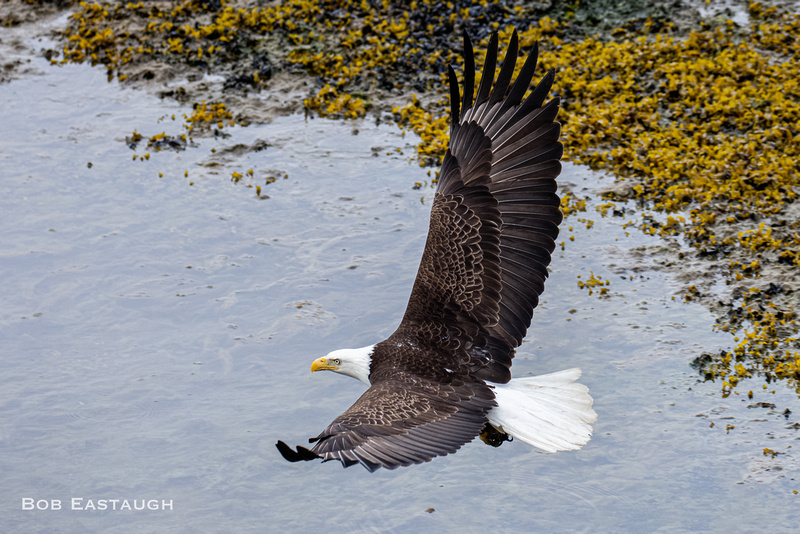 131A6756
131A6756
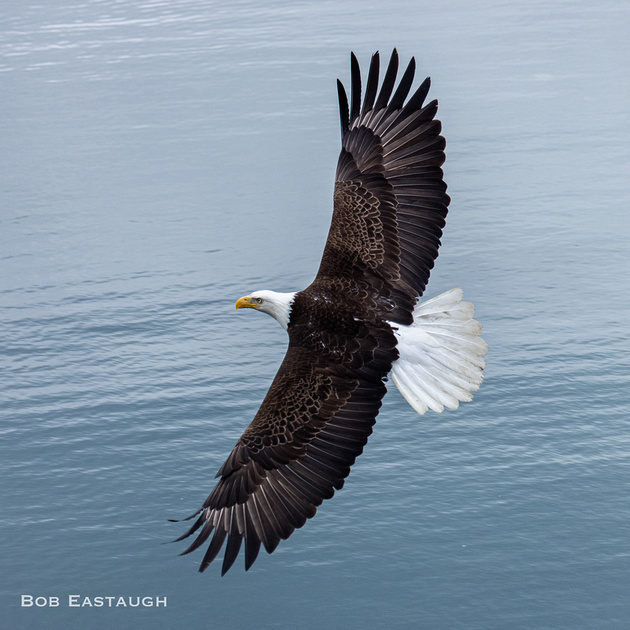 131A6768
131A6768
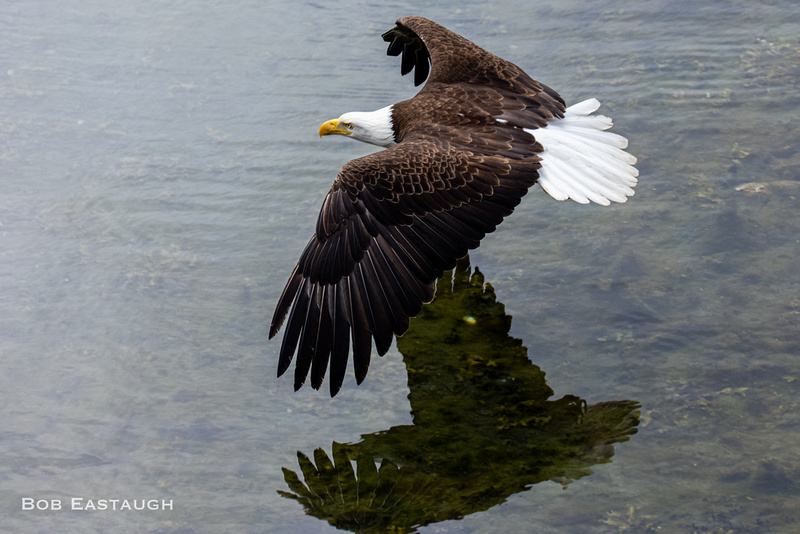 131A6251
131A6251
But this seeming nobility must be reconciled with the avian equivalent of the mailed armor and daggers hidden beneath the silken robes of Medicis and Borgias. Powerful wings, hooked beaks, sharp talons, and feet like fists make them the masters of the bird world. More agile birds can harass them, but with little actual effect. Eagles ultimately pretty much get what they want.
Beaks and talons:
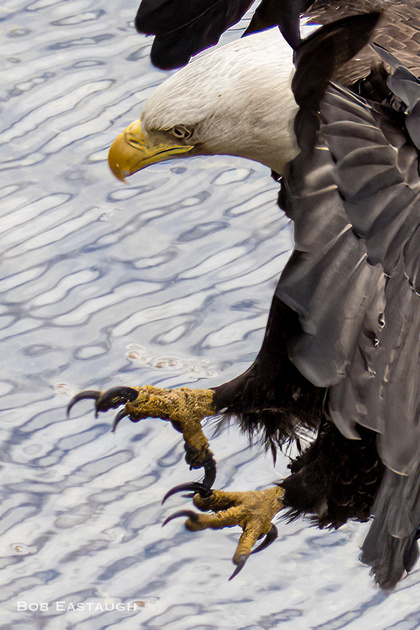 131A6334-Edit
131A6334-Edit
Hooked beak and fierce gaze:
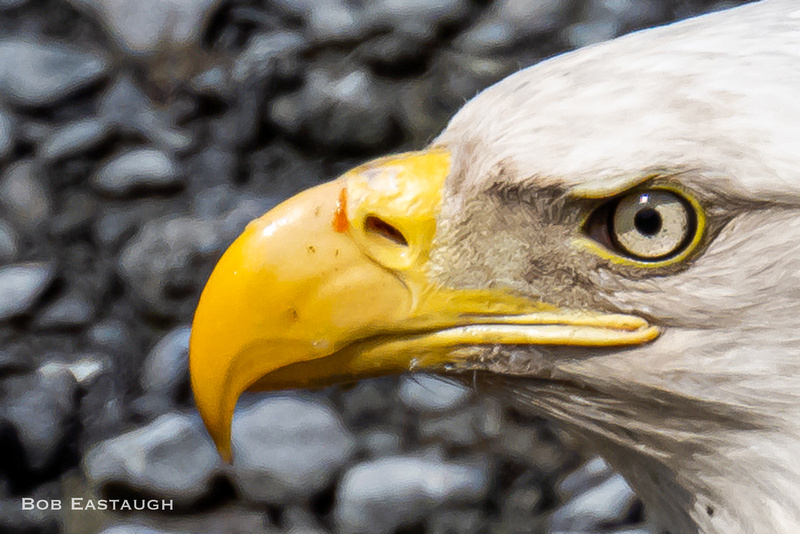 131A5350
131A5350
Powerful wings, wide span and broad chord:
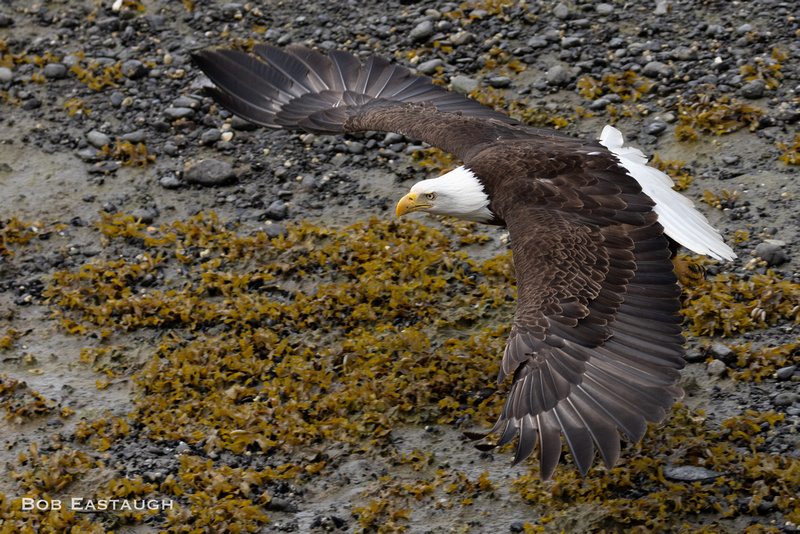 131A6237
131A6237
On approach, toes and talons are curled into fists:
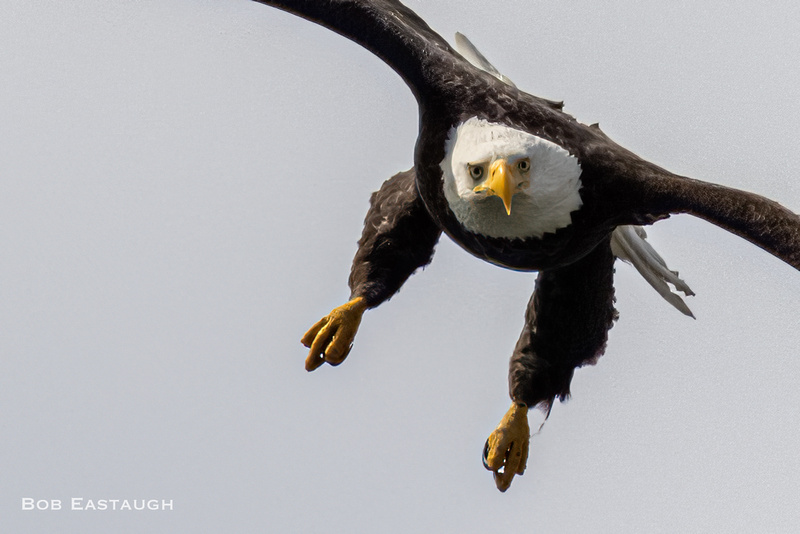 untitled-5235
untitled-5235
Talons can clutch rock outcroppings, like a tripodded anchor:
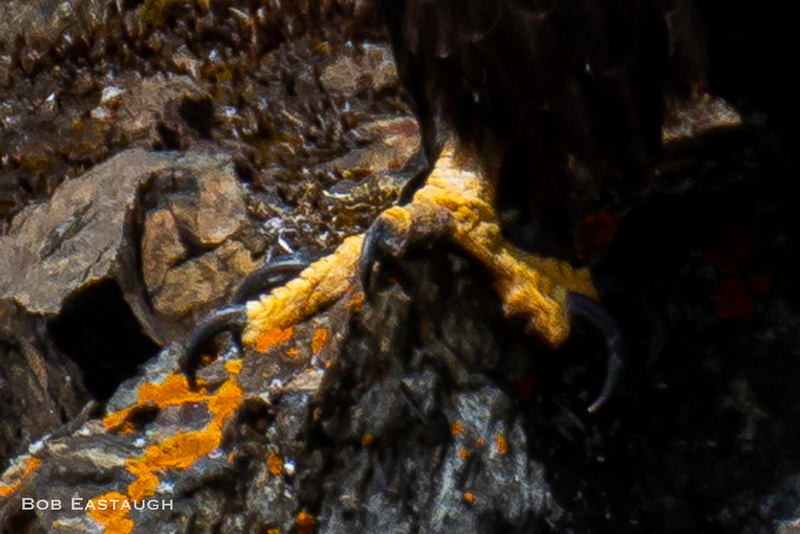 131A5359
131A5359
Or pin down food:
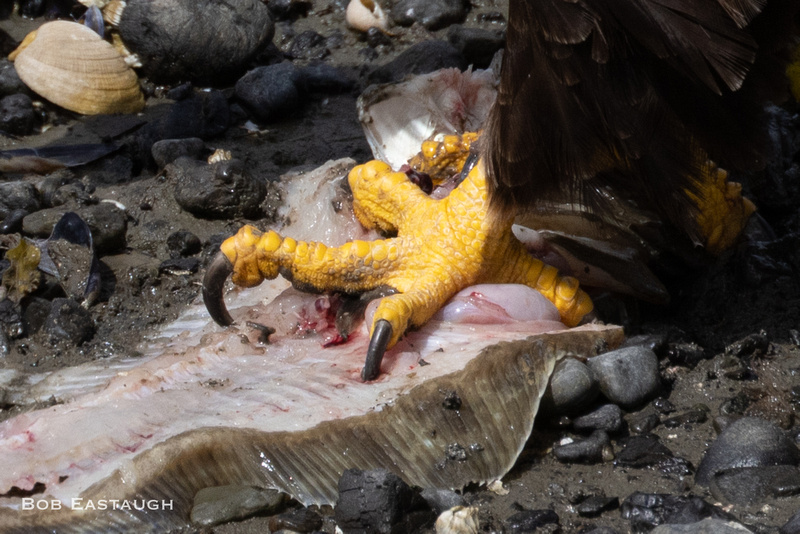 131A5463
131A5463
When landing, talons are retracted upward, ready to clutch rock or flesh:
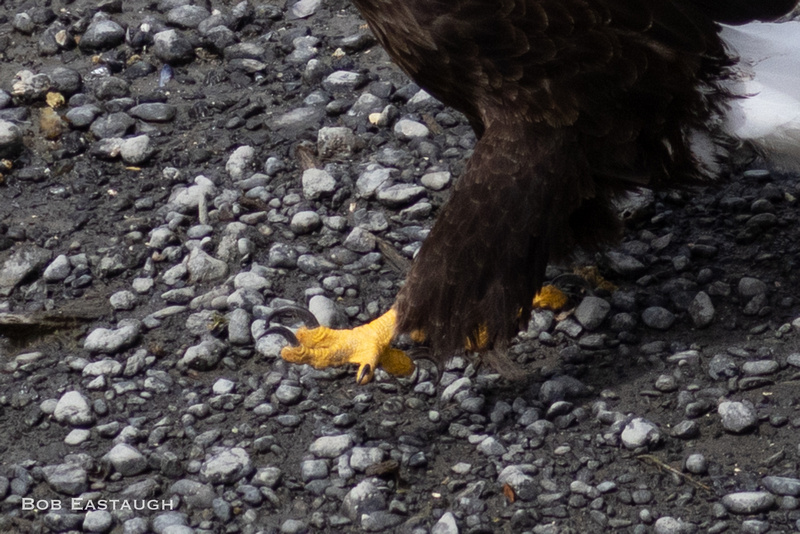 131A5423
131A5423
 131A5982-Edit
131A5982-Edit
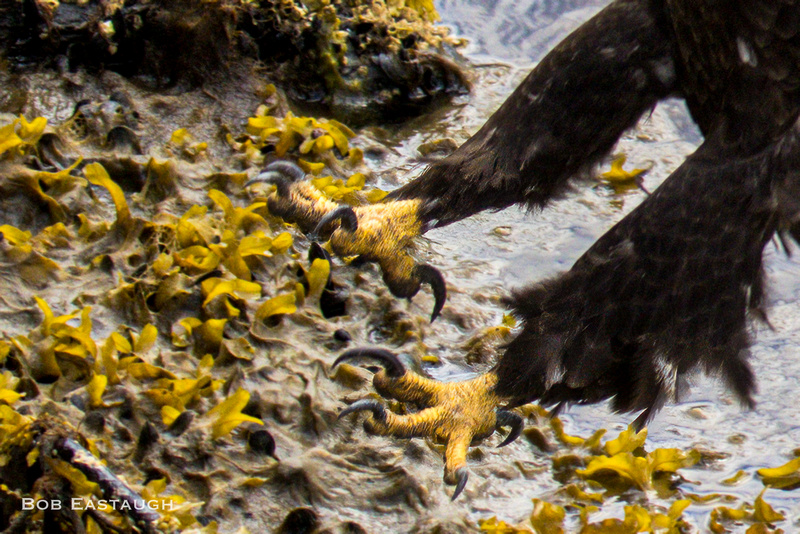 131A6336-Edit
131A6336-Edit
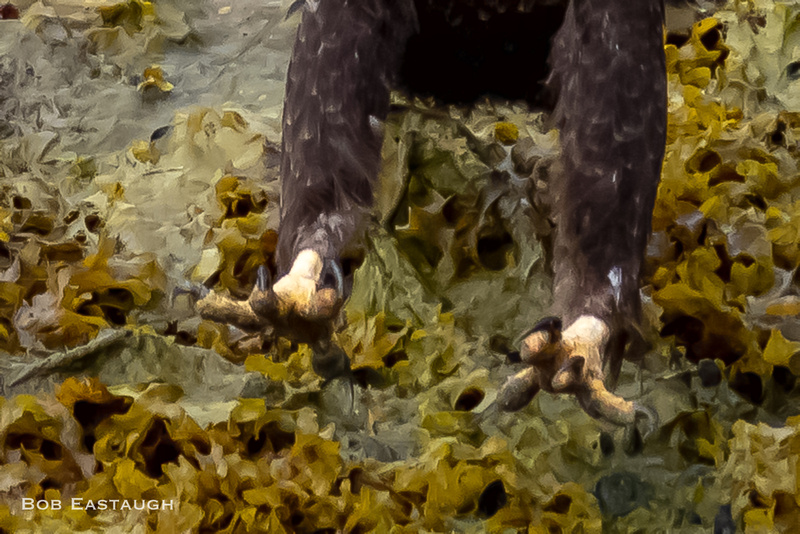 untitled-3
untitled-3
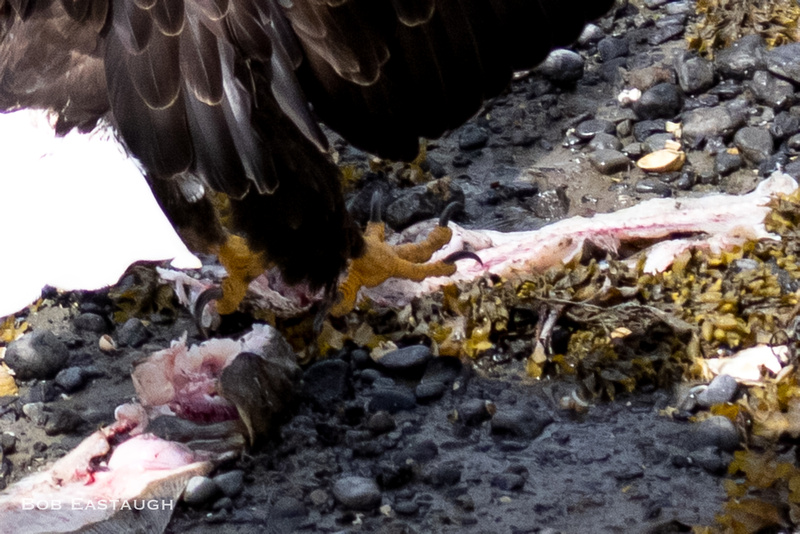 untitled-5393
untitled-5393
Opportunistic eaters, bald eagles have relatively small stomachs and are often foraging for their young, as well as for themselves, so a fish carcass is a welcome prize.
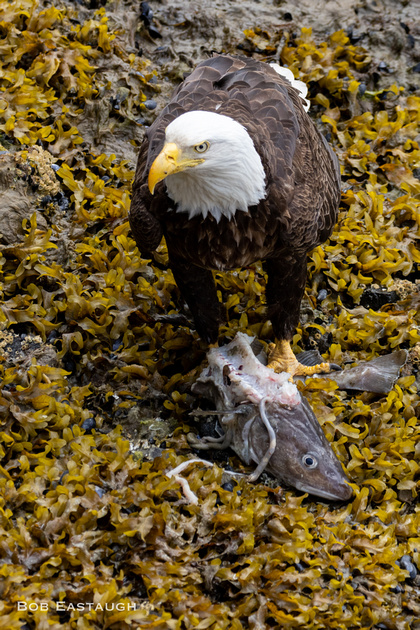 131A6298
131A6298
For eagles cruising watchfully overhead, this sort of prize is of great interest.
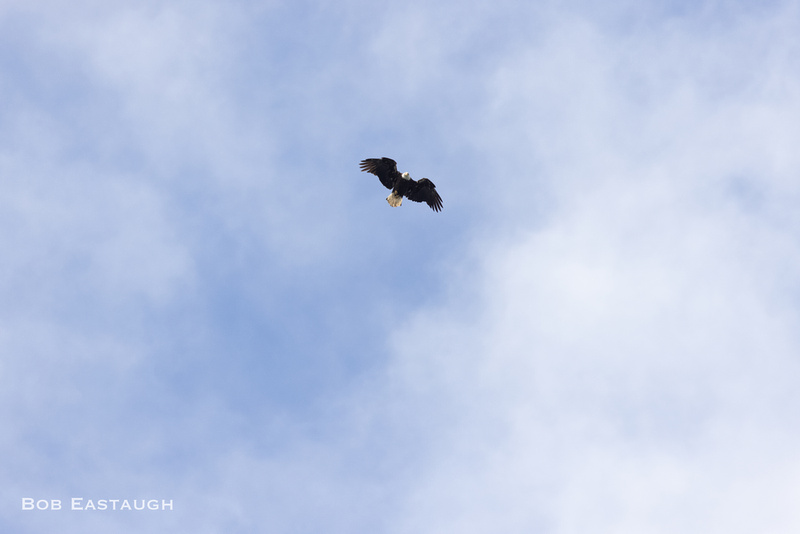 131A5732
131A5732
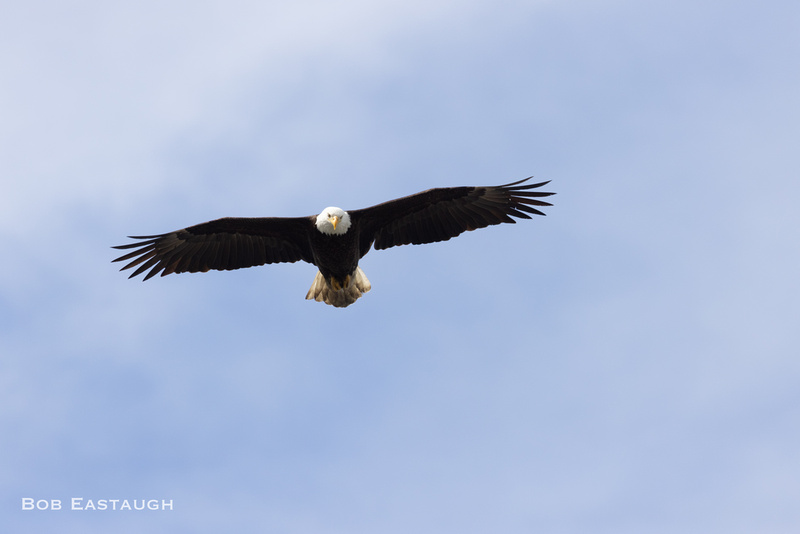 131A5793
131A5793
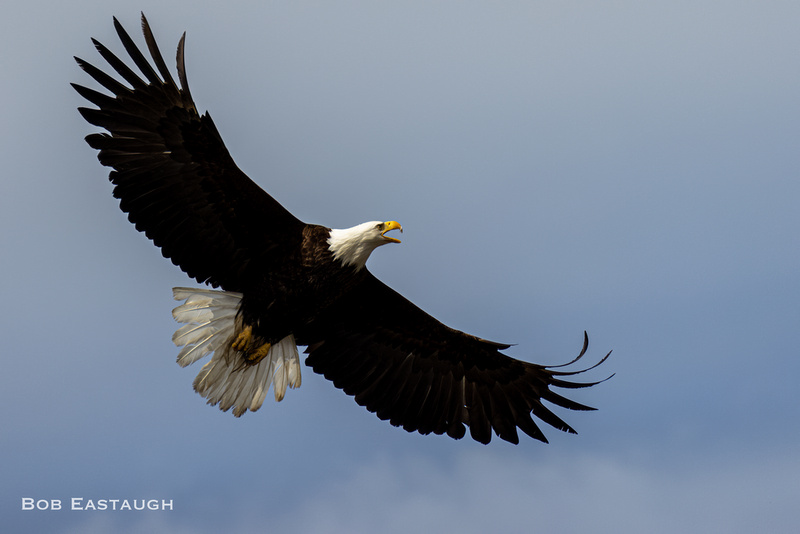 131A5318-Edit
131A5318-Edit
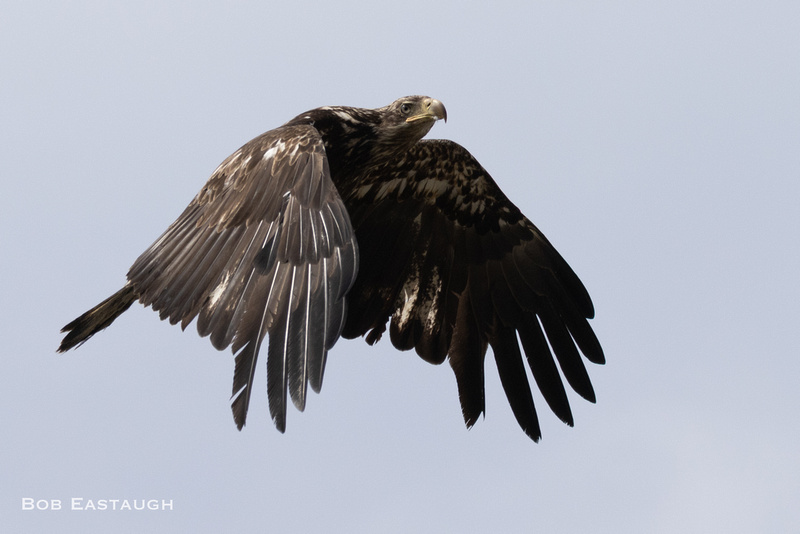 131A6055
131A6055
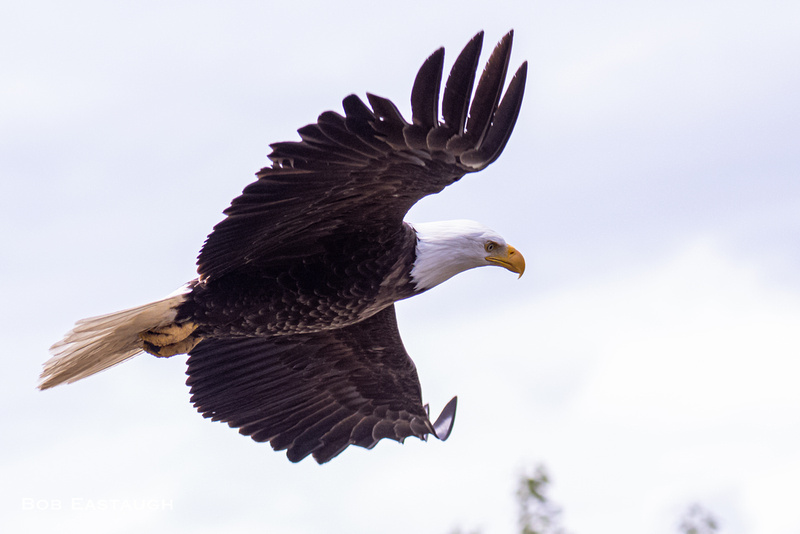 131A5761
131A5761
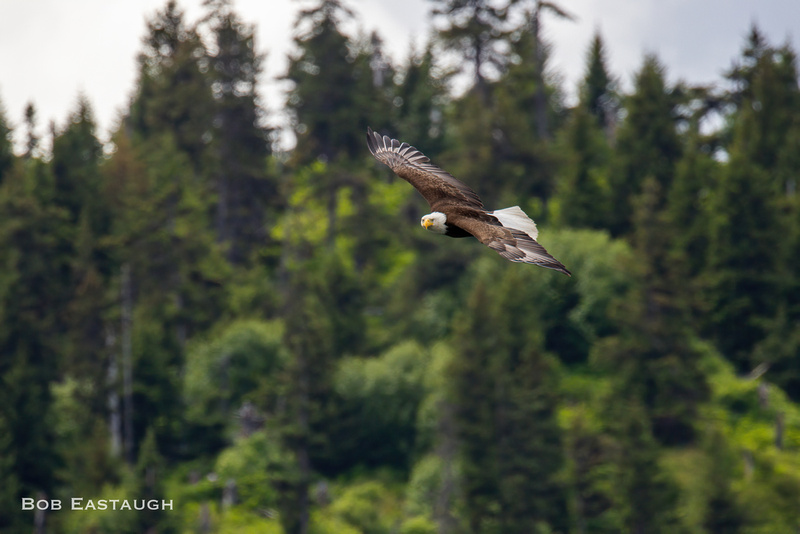 untitled-6127-2-DeNoiseAI-clear
untitled-6127-2-DeNoiseAI-clear
An eagle in possession is consequently on constant alert.
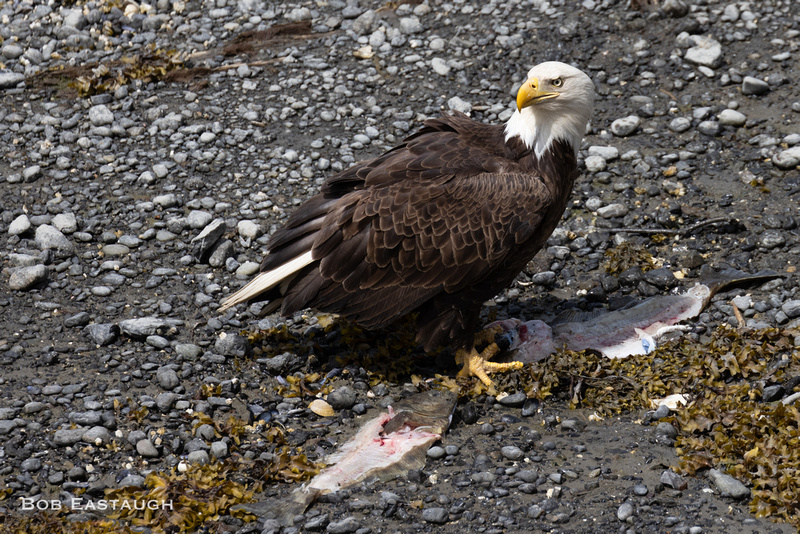 131A5178
131A5178
Comments


After a lifetime of mainly expressing myself with words, my postings here will mainly rely on images. They will speak for themselves to some extent, but I'll usually add a few comments of explanation. I've taken photographs for decades, since the 1950's, inspired in part by my father's photographic skill. Four years of photo assignments and quality darkroom time eventually gave way to decades of casual and family picture-taking. I re-immersed myself when I left film and turned to digital.